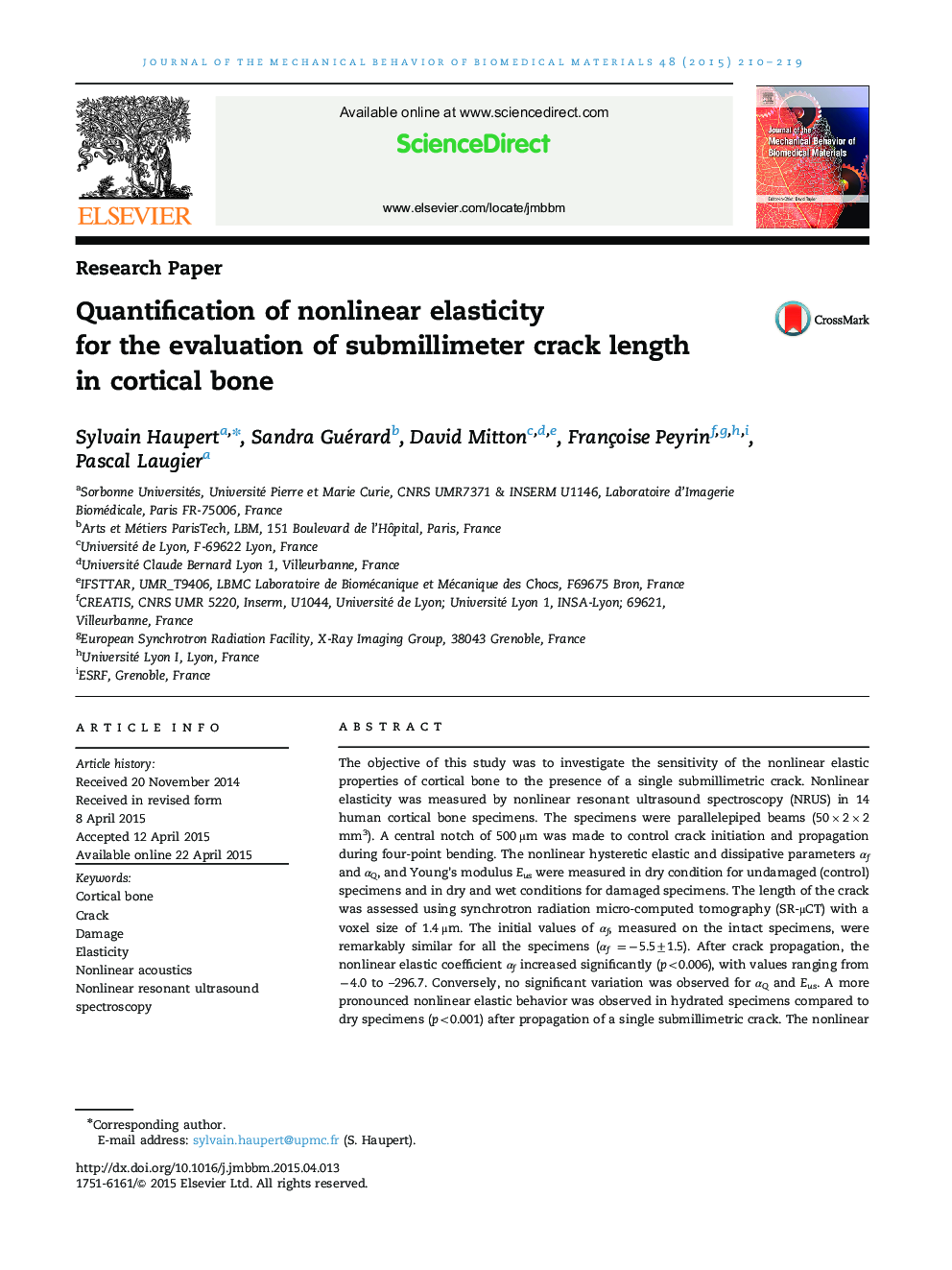| Article ID | Journal | Published Year | Pages | File Type |
|---|---|---|---|---|
| 7208482 | Journal of the Mechanical Behavior of Biomedical Materials | 2015 | 10 Pages |
Abstract
The objective of this study was to investigate the sensitivity of the nonlinear elastic properties of cortical bone to the presence of a single submillimetric crack. Nonlinear elasticity was measured by nonlinear resonant ultrasound spectroscopy (NRUS) in 14 human cortical bone specimens. The specimens were parallelepiped beams (50Ã2Ã2 mm3). A central notch of 500 µm was made to control crack initiation and propagation during four-point bending. The nonlinear hysteretic elastic and dissipative parameters αf and αQ, and Young׳s modulus Eus were measured in dry condition for undamaged (control) specimens and in dry and wet conditions for damaged specimens. The length of the crack was assessed using synchrotron radiation micro-computed tomography (SR-μCT) with a voxel size of 1.4 μm. The initial values of αf, measured on the intact specimens, were remarkably similar for all the specimens (αf =â5.5±1.5). After crack propagation, the nonlinear elastic coefficient αf increased significantly (p<0.006), with values ranging from â4.0 to -296.7. Conversely, no significant variation was observed for αQ and Eus. A more pronounced nonlinear elastic behavior was observed in hydrated specimens compared to dry specimens (p<0.001) after propagation of a single submillimetric crack. The nonlinear elastic parameter αf was found to be significantly correlated to the crack length both in dry (R=0.79, p<0.01) and wet (R=0.84, p<0.005) conditions. Altogether these results show that nonlinear elasticity assessed by NRUS is sensitive to a single submillimetric crack induced mechanically and suggest that the humidity must be strictly controlled during measurements.
Keywords
Related Topics
Physical Sciences and Engineering
Engineering
Biomedical Engineering
Authors
Sylvain Haupert, Sandra Guérard, David Mitton, Françoise Peyrin, Pascal Laugier,
